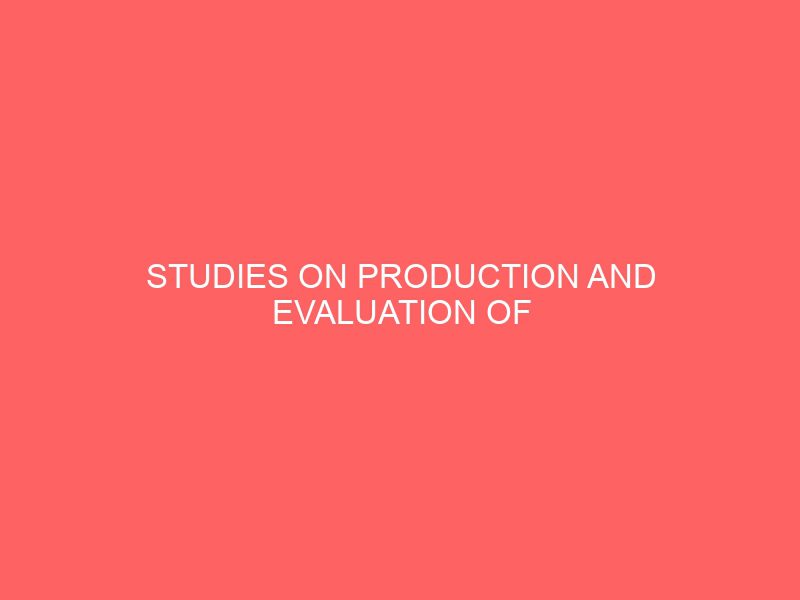Description
ABSTRACT
A total of 500 bacteria isolated from different soil ecovars were screened for methionine production on solid agar medium and 42 of them were found to be methionine producers Preliminary production of methionine in submerged medium showed that three of the isolates, identified and confirmed by 16SrRNA as Bacillus cereus DS 13, Bacillus cereus AS 9 and Bacillus cereus RS 16 produced methionine levels above 1mg/ml and were thus selected for further studies Methionine was maximally produced with 8 w/v glucose, 2 w/v NH4Cl2, for B cereus DS13 and B cereus RS 16 while 10 w/v glucose, 2 w/v NH42SO4, was optimum for B cereus AS 9 Methionine accumulation was greatly stimulated by Pyridoxine HCl in Bacillus cereus DS13 while folic acid and thiamine enhanced methionine accumulation in B cereus AS 9 and B cereus RS 16 Of the amino acids tested, DLOrnithine monohydrate had the highest stimulatory effect on methionine production in B cereus RS16 Methionine accumulation was also enhaced by Zn2 in all Bacillus strains Ba2 at 50g/ml produced the maximum concentration of 364mg/ml in B cereus RS 16 All growth promoting factors tested at 01 w/v enhanced growth and produced high methionine yields except for casein in Bacillus cereus DS13 Tween 80 had the highest stimulatory effect on methionine production in B cereus DS13 while linoleic and palmitic acid enhanced methionine concentration in Bacillus cereus AS 9 and B cereus RS 16 respectively There was no significant difference pgt;005 in the means of methionine produced due to the addition of the five surfactants Time course of methionine production showed that maximum methionine accumulation was obtained after 46h for B cereus AS9 and 96h for B cereus DS 13 and B cereus RS16 In UV irradiated cultures, a mutant strain designated UV161 produced the highest methionine concentration of 459mg/ml All DLethionine mutant strains produced higher methionine levels when compared with the wild cultures
TABLE OF CONTENTS
Title Page ii
Approval Page iii
Certification iv
Dedication v
Acknowledgement vi
Table of Contents vii
List of Tables viii
List of Figures ix
ABSTRACT x
INTRODUCTION
Literature review 4
Biological functions 7
Uses in technology 8
Amino acid production 9
Microbial production of amino acid 11
World supply of amino acid 12
Standard processes for production of amino acids 14
Processes with increased productivity 17
Raw materials for the production of amino acids 22
Automatisation and process control 24
Process scale up and scale down 26
Sterility 28
Donwstream technology 28
L methionine 29
Clinical importance of methionine 31
Industrial importance of methionine 33
Chemical synthesis of methionine 34
Enzymatic methods of methionine synthesis 36
Production of methionine by submerged cultivation 38
Selection of microorganisms for the production of Lmethionine 38
Methionine biosynthesis in microorganisms 40
Metabolic regulation and control of methionine biosynthesis 43
Production of methionine by auxotrophic and regulatory mutants 46
Roles of transfuration and reverse transsulfuration in methionine production 48
Media composition and culture conditions 49
Analytical methods 51
Process development and reactor studies 52
Metabolic flux analysis 53
Recovery of methionine from fermented broth 53
Amino Acid Nutrition 54
Infancts and Children 55
Adults and elderly persons 55
Requirements for indispensable amino acids 56
Supplementation of food with methionine 57
MATERIALS AND METHODS
Microorganisms used 60
Isolation of Bacteria from the Soil 60
Characterization of isolates 61
Grams stain 61
Catalase test 61
Spore stain 61
Motility test 61
Indole test 61
Oxidase test 62
Methyl red test 62
Nitrate test 62
VogesProskauer test 63
Growth at 5 and 65 Nacl 63
Starch hydrolysis 63
Carbohydrate fermentation test 63
Urease test 64
Citrate test 64
Molecular characterization 64
Preliminary screening of isolates for methionine production on solid medium 64
Preliminary production of methionine in submerged culture 64
Fermentation 65
Determination of growth of the isolate 65
Lmethionine assay 65
Optimization of production parameter for methionine production 66
Effect of medium/fermenter volume ratio on growth and methionine production 66
Effect of inoculum size 66
Effect of initial pH 66
Effects of agitation on growth and methionine production 67
Effect of carbon sources 67
Effect of concentration of carbon sources 67
Effect of nitrogen Sources 67
Effect of concentration of nitrogen Sources 68
Effect of concentration of calcium Carbonate 68
Effect of bvitamins 68
Effect of bivalent metal 68
Effect of amino acids 69
Effect of antibiotics 69
Effect of growth promoting factors 69
Effect of surfactants 70
Time course of fermentation for methionine production 70
Estimation of reducing Sugar 71
Derivation of UV irradiated Mutants 71
Irradiation and mutant selection 71
Screening of UV irradiated mutant strains for methionine production 72
Derivation of DL ethionine resistant mutant 72
Screening of DLethionine mutant for methionine production 72
Statistical Analysis 73
RESULTS
Preliminary screening of bacterial isolates for Lmethionine production on solid agar 74
Preliminary production of methionine in submerged culture 74
Identification of Working Isolates 74
Effect of medium /fermenter volume ratio on growth and methionine production 74
Effect of inoculum size 80
Effect of initial pH 83
Effect of agitation on growth and methionine production 83
Effect of carbon sources 83
Effect of concentration of glucose 83
Effect of nitrogen sources 91
Effect of concentration of calcium carbonate 98
Effect of bvitamins 98
Effect of bivalent metal 105
Effect of amino acids 110
Effect of antibiotics 115
Effect of growth promoting factors 120
Effect of surfactants 124
Time course of fermentation for methionine 128
Derivation of UV Irradiated mutants 128
Screening of UV Irradiated mutant strains for methionine production 128
Derivation and screening of DL ethionine resistant mutants 133
DISCUSSION 136
CONCLUSION 148
REFERENCES 149








Reviews
There are no reviews yet.